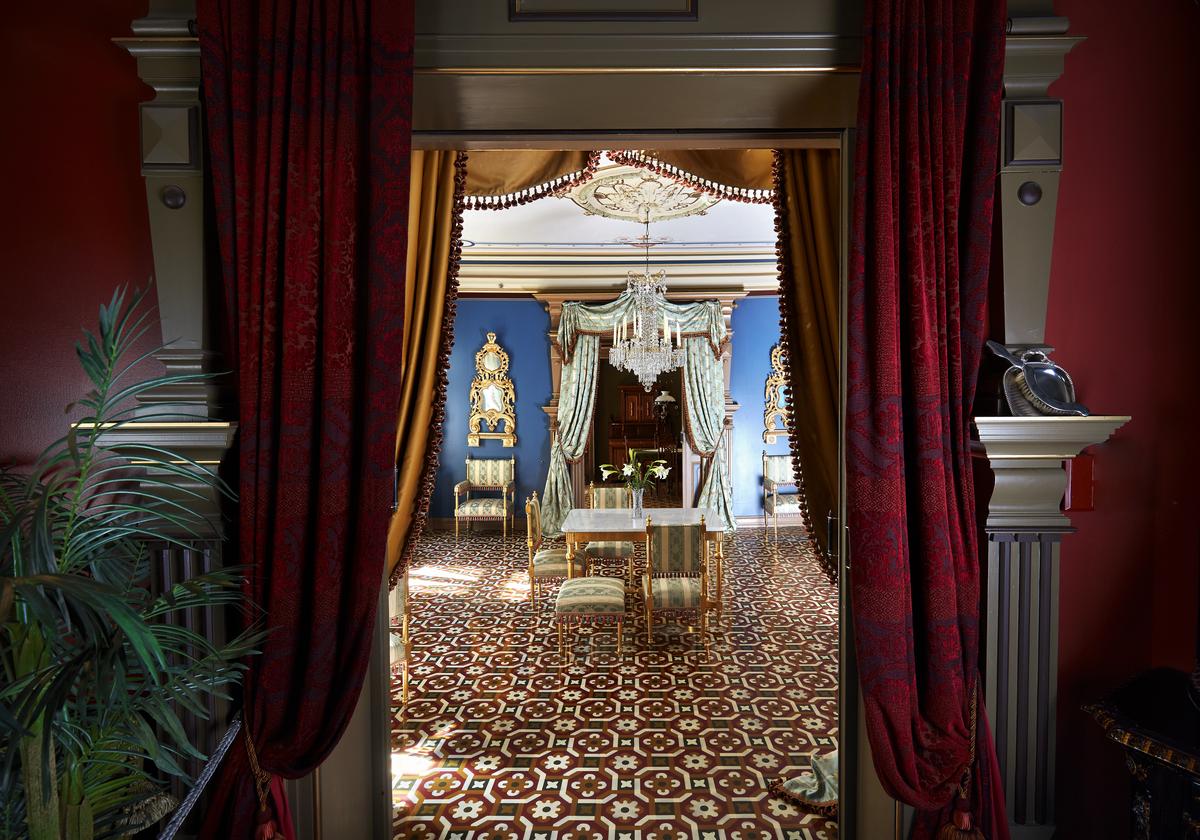Ibsen's dramas are performed on stages around the world, but it was in this apartment that he lived and composed his last dramatic works.
In Arbins gate, it is possible to get a glimpse behind the façade of the aging poet.
The apartment has been returned to Ibsen's time with the poet's own furniture and fixtures, original colours and décor.
"Sneak peek" into some of the rooms
Suzannah Ibsen was not very happy with the apartment the couple first had, in Victoria Terrace, with the long, cold hallway. She asked Henrik to find a new one, and that's how they ended up in Arbins gate 1.
In a letter to Suzannah, Ibsen describes the new home as follows:
-
Henrik Ibsens study Haakon Harriss
Henrik Ibsens study
In his study hangs Christian Krohg's portrait of the Swedish playwright August Strindberg.
Ibsen bought the painting for 500 kroner and called the painting The Emerging Madness.
When Ibsen celebrated his 70th birthday in Copenhagen, he is said to have commented on the painting and said; "He must hang there and take care,... for he is my mortal enemy."
And with Strindberg staring in the back, Henrik Ibsen wrote John Gabriel Borkman (1896) and When We Dead Awaken (1899).
The dining room
Although up to 20-22 people could be accommodated in the dining room, large parties was rare in the Ibsen couple's home. Sunday dinners, on the other hand, with Sigurd, Bergliot and little Tancred was more common.
In his autobiography, Believe It or Not, Tancred writes:
-
Suzannah Ibsen's library IBSEN Museum & Teater
Suzannah Ibsen's library
We would assume that the library was Henrik Ibsen's favorite room, but it was Suzannah who spent the most time here.
"The garden of the soul" she is said to have called this room.
Here she sat and read while Ibsen sat in the study. But in the evenings he came in to her and sat down in one of the wicker chairs, and Suzannah read aloud to him and translated books, letters, and newspaper articles.
Suzannah was a well-read woman and kept up to date with new literature, so for Ibsen she was an interesting and challenging conversation partner.
-
Henrik Ibsens bed Anne - Lise Reinsfelt
Henrik Ibsen's bedroom, and his last words
During the last weeks of Ibsen's life, he was more or less unconscious. The nurse tried to keep the family's spirits up and said; Today, Dr. Ibsen looked much better.
Ibsen, who had not said anything for a while, sat up and exclaimed; "On the contrary!", lay back in the pillows, went into a coma and died the next day.
The doctor did not think this was an answer to what had been talked about, but in any case, it is an accurate summary of the famous playwright's life and work.
Ibsen died on 23 May 1906, 78 years old.




